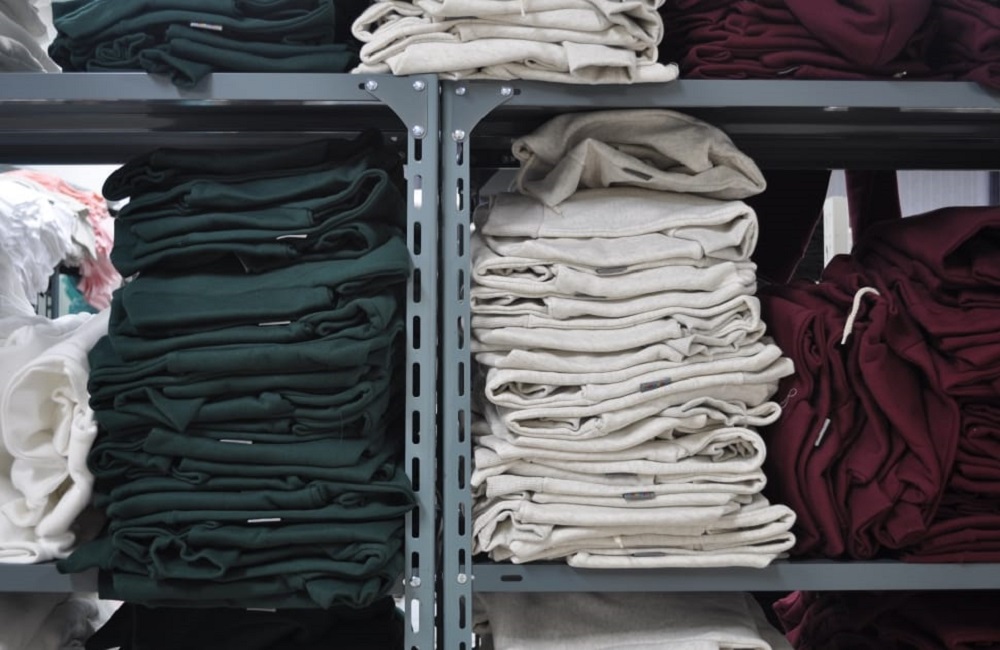Everybody has experienced the situation where they take out their beloved dress or blouse from the laundry and discover it is now two sizes smaller. It’s possible to feel disappointment and genuine frustration. But don’t panic, you can maintain the like-new appearance of your clothing with a few thoughtful practices and professional guidance. This post will provide useful advice for parents, fashionistas, and homeowners on how to stop clothing from shrinking in the washing.
Understanding Why Clothes Shrink
Before we jump into the tips, it’s essential to understand why clothes shrink in the first place. Fabric shrinkage happens due to a combination of heat, agitation, and the type of fabric.
The Science Behind Fabric Shrinkage
The majority of textiles are composed of fibers that are stretched and taut during production. The fabric may shrink as a result of these fibers relaxing and contracting in the presence of heat and water. Particularly for natural textiles like cotton and wool, this is accurate.
Factors That Contribute to Shrinkage
- Heat: High temperatures, whether from water or the dryer, cause fibers to contract.
- Agitation: Vigorous washing cycles can agitate the fibers, making them compact and shrink.
- Type of Fabric: Different fabrics react differently to washing. Natural fibers are more prone to shrinkage compared to synthetic ones.
Key Tips for Preventing Shrinkage
Now that we know why clothes shrink, let’s explore some practical ways to prevent it.
Always Read and Follow the Care Labels
Important advice on cleaning and maintaining your clothes may be found on the care labels attached to it. Ignoring these labels may result in shrinking and other unintentional harm.
- Follow Washing Instructions: Care labels specify the appropriate water temperature and washing cycle.
- Drying Directions: Some clothes are meant to be air-dried, while others can handle the dryer.
Use Cold Water for Washing
Hot water is one of the primary culprits behind fabric shrinkage. Using cold water can significantly reduce the risk.
- Energy Efficient: Besides protecting your clothes, washing in cold water is also more energy-efficient.
- Cold Water Detergents: Consider using detergents specifically designed for cold water to ensure thorough cleaning.
Avoid Using the Dryer for Delicate Fabrics
Dryers can be harsh on delicate fabrics, causing them to shrink or lose their shape.
- Air-Dry Delicate Items: Hang or lay flat items made from materials like wool, silk, or linen.
- Low-Heat Setting: If you must use the dryer, opt for a gentle, low-heat setting.
Invest in a Fabric Conditioner
Fabric conditioners can help maintain the quality and size of your clothes by relaxing the fibers and reducing friction.
- Softens Fabric: Makes clothes feel softer and more comfortable.
- Reduces Static: Helps prevent static cling, which can further damage delicate fibers.
When in Doubt, Hand-Wash or Dry Clean
If you’re unsure whether a garment is prone to shrinking, it’s best to hand-wash or take it to a professional dry cleaner.
- Hand-Washing: Use mild detergent and cold water for hand-washing delicate or special items.
- Dry Cleaning: For items labeled “dry clean only,” trust the professionals to handle them.
Special Care for Delicate Fabrics
Extra care is needed with some materials to prevent shrinking. Here are some more suggestions for taking care of fragile items.
Wool
Wool is notorious for shrinking in the wash, but you can prevent this by taking some precautions.
- Use Wool-Specific Detergent: There are detergents designed specifically for wool that are gentler on the fibers.
- Cold Water: Always wash wool in cold water.
- Air-Dry: Lay wool garments flat to dry to maintain their shape.
Silk
Silk is another fabric that needs special care to avoid shrinking.
- Hand-Wash: Use cold water and a mild detergent.
- Avoid Agitation: Gently swish the garment in water; do not wring or twist.
- Air-Dry: Hang to dry in a shaded area to prevent sun damage.
Cotton Blends
While cotton is prone to shrinking, blends can be a bit more forgiving. However, caution is still needed.
- Cold Water: Always opt for cold water to minimize shrinkage.
- Low-Heat Drying: Use a low-heat setting on the dryer and remove clothes promptly.
Case Studies and Expert Advice
Gaining knowledge from textile professionals and talking to people who have successfully avoided shrinking will give you more confidence and effective prevention techniques.
Real-Life Experiences
- Sarah’s Story: Sarah, a fashion enthusiast, shares, “Before I started using a wool-specific detergent and air-drying my wool sweaters, I used to hate cleaning them. They now always turn out perfectly.”
- John’s Insight: John, a homeowner, says, “Following care labels might seem tedious, but it has saved me so much frustration. My clothes last longer and look better.”
Expert Tips
- Textile Expert Jane Doe: “Investing in good fabric conditioner can make a world of difference. It keeps fibers relaxed and reduces the friction that causes shrinkage.”
- Laundry Specialist Mike Smith: “For delicate fabrics, hand-washing is often the safest bet. It gives you control over the washing process and minimizes the risk of damage.”
Final Thoughts
It’s not as difficult as it sounds to stop clothing from shrinking in the washing. You may maintain the best-looking wardrobe by learning the elements that cause shrinking and forming a few mindful behaviors.
Remember these key tips:
- Always read and follow the care labels.
- Use cold water for washing.
- Avoid using the dryer for delicate fabrics.
- Opt for a gentle, low-heat setting if you must use the dryer.
- Invest in a fabric conditioner to maintain quality and size.
- Hand-wash or dry clean when in doubt.
Lastly, always remember to read the care labels carefully and treat your clothing with the respect it deserves. Have fun doing the laundry!

